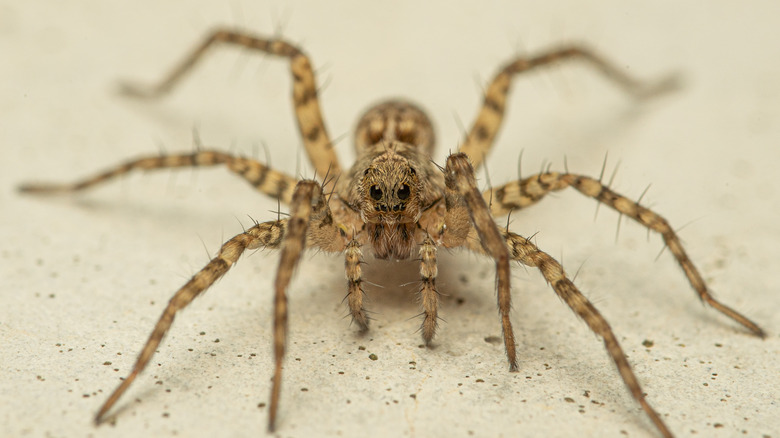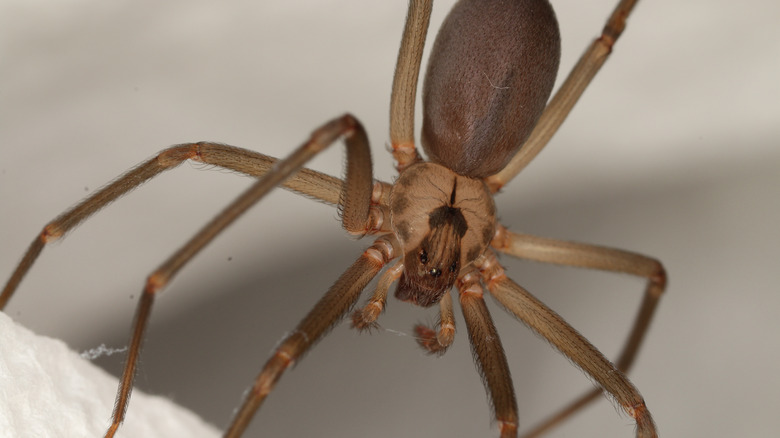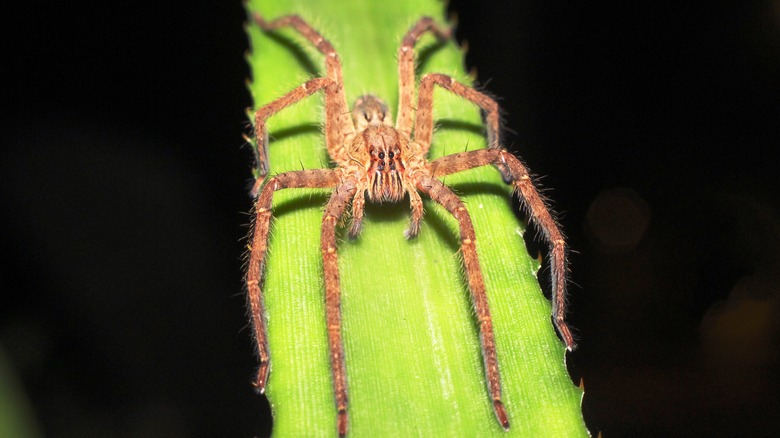How To Tell The Difference Between A Safe Wolf Spider And Dangerous Brown Recluse
Finding a scary-looking spider is never a good experience, but being able to identify whether or not the arachnid is dangerous will help you handle the situation properly. Though they are virtually harmless to humans, wolf spiders are often mistaken for brown recluse spiders, which have venom that can be dangerous. These spiders may look similar, but being able to differentiate them could save you from a nasty bite or allow you to safely get rid of the spider.
One easy way to tell the difference between brown recluse and wolf spiders is by their eyes. While wolf spiders have eight eyes like most arachnids, the brown recluse only has six. Brown recluse spider bites can cause fever, chills, itching, nausea, and painful sores at the location of the bite. Occasionally, more serious symptoms like seizures arise, but this is rare. A bite from a wolf spider might hurt a bit, but it's unlikely to provoke any concerning symptoms since humans aren't usually susceptible to their venom.
How to identify a brown recluse spider
Brown recluse spiders have a signature violin-shaped marking on their backs, which is the easiest way to ensure what type of spider it is. The marking typically begins right behind the spider's head and is slightly darker in color than the rest of the body. In younger brown recluses, the marking may not be visible yet. These spiders can range in color from brown or tan to various shades of yellow and are generally 1 or 1 ½ inches in length.
While many arachnids have banded legs or visible hair, brown recluse spiders have neither. These venomous spiders are often found in dark areas, as they like to hide, and might be spotted in an attic, garage, or storage area. If you see a brown recluse, keep your distance to avoid scaring them and being bitten. It's always best to call a professional exterminator when dealing with these potentially dangerous arachnids.
How to identify a wolf spider
While wolf spiders have markings, they will not resemble the fiddle shape like that of the brown recluse and may appear more like lines. Wolf spiders are usually less than 2 inches in length and are visibly hairy. Unlike the brown recluse, wolf spiders do not weave webs and secure their food by hunting. Female wolf spiders may be spotted with their eggs or new young on their backs. These arachnids can be brown, gray, or multicolored.
When trying to figure out whether the spider in your basement is a wolf spider or a brown recluse, pay attention to the size, the markings on the back, the number of eyes the spider has, and if the arachnid is hairy. Even if you've determined that the spider you're dealing with is a wolf spider it's best not to pick them up or handle them, since they may still leave you with an uncomfortable bite.


